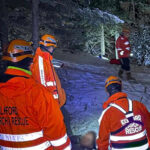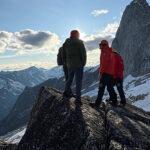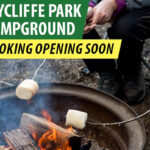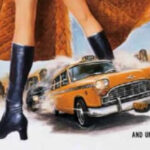Home »

I have a theory
Letter to the Editor
I love to go a-pondering, along a mountain track.
But as I go, I have to think, when will the wildlife come back?
Wildlife. Critters. Specifically; ungulates, our deer and elk populations.
There is no shortage of people in our region who will tell you what they think the reason or problem is that is causing the decline of these animals. And, of course, the reasons are many according to public survey. Some hate the provincial ministry for its ‘mismanagement’ and the demise of the ungulates under their watch; global warming has created too many fires that have destroyed feeding areas or you hate the hunters for killing the deer and elk and they are the reason why the population is in decline. Again, there seems to be many views.
I have a theory (don’t we all!). There is an issue that very few people seem to want to address. I am referring to the ‘free’ range cattle that are allowed to graze in the mountain rangeland and wildlife habitat during the summer and fall months.
Sounds harmless, but consider this thought.
These domestic animals are released into the mountains and then travel through every nook and cranny in the mountains, and I mean EVERY nook and cranny. I myself am by no means an ‘expert’ mountaineer. I am not an ‘expert’ hunter. But, I have done my share of hiking in the backcountry during hunting season. I have been astride ridgelines, up many draws and have walked through some pretty remote areas in the last 15 years. There is nowhere back there that I have not encountered cattle or the large round piled evidence of them.
So what, you say! Well, the problem is this. For the entire summer and into the fall, you have cattle ranging in natural ungulate feeding areas. That means, because of the herds of cattle, there are deer and elk being deprived of the feed they need to nourish themselves and their young, feed their own bodies to ensure their health, feed to fatten both themselves and their young so as to have a better chance of surviving the upcoming winter months and lastly but certainly not least, gain weight and nutrients needed for the fast approaching mating season (this means weight on for the females and antler growth for the males). The wild ungulates spend all summer competing with the domestic ungulates across the entire natural grasslands and feeding ranges.
Now, consider that winter is upon the ungulates. It’s time to migrate down to their feeding rangeland in the valley bottoms. The cattle are ushered onto the lush fields of green. The weakened deer and elk populations make their way down off the mountains, and lo and behold, what is it they encounter when they get down? Fencing, and hundreds of kilometres of it. They are now denied access to what was once their winter feeding habitat, as fencing surrounds their feed. No longer can they access the grasses that they once grazed and relied on to get them through the winter and into next spring. Then, for those that survive through to spring, the cycle repeats and the weakened herds travel back to their mountain habitat. They now must again compete with the herds of cattle in their natural rangeland for another summer, and then winter, and then summer, and so on, and so on.
I asked a friend of mine what he thought of the issue of ‘free’ range cattle. Instead of answering me, he placed this question on the East Kootenay Wildlife Association Facebook page: “Just curious, what about the cattle in the wildlife summer and winter habitat range? I don’t hear much about this”…
The response he got back was this: “Great point. It is our vision that legislation in the province needs to be revised so legal objectives for wildlife populations and habitat are triggers that other agencies and tenure holders are obligated to meet. That, in our opinion, would include range used by domestic animals.”
Anyway, that’s my two cents. And I don’t want people to think I am anti-farm or a cattle hater. The truth is quite the opposite. I do think though that we need to take a closer look at any and all the issues that are contributing to the decline of our wildlife populations, and I think free ranging domestic cattle in the wild habitat is a big one.
Mike Keehn,
Fort Steele







